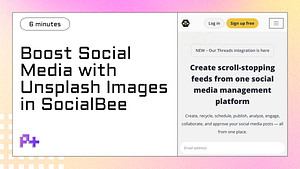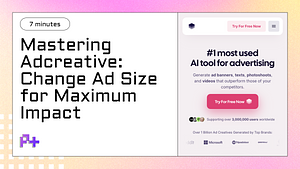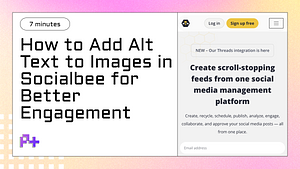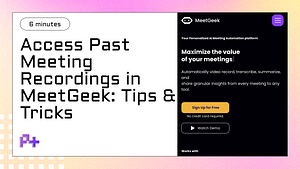Understanding Banner Advertising: An Overview
Banner advertising is a pivotal component of digital marketing, offering businesses a visually impactful way to reach their target audience. Understanding the nuances of banner ads, including the ability to change ad size in Adcreative, is crucial for marketers aiming to optimize their campaigns. Different sizes resonate differently with audiences, and selecting the right dimensions can significantly influence engagement rates. Common formats include leaderboard (728x90), medium rectangle (300x250), and skyscraper (160x600), each serving unique purposes across various platforms.
When creating banner ads, it’s essential to consider where the ads will be displayed. For instance, mobile devices require distinct sizing compared to desktop banners, which is why the ability to change ad size in Adcreative becomes a valuable tool. This flexibility allows marketers to tailor their messages to fit specific placements, ensuring that ads are not only visually appealing but also strategically positioned to capture attention. Moreover, responsive designs that automatically adjust to different screen sizes can enhance user experience and lead to higher conversion rates.
In addition to size, the design elements of banner ads—such as color, typography, and imagery—play a crucial role in attracting clicks. A well-crafted banner ad should convey a clear message, use an eye-catching call-to-action, and align with the overall branding strategy. As marketers delve deeper into banner advertising, understanding how to change ad size in Adcreative will empower them to experiment with various designs and placements. By monitoring performance metrics, they can refine their strategies and improve the effectiveness of their campaigns, ultimately driving better results and maximizing return on investment.
The Importance of Display Ad Sizes in Digital Marketing
Understanding the importance of display ad sizes is crucial for maximizing the effectiveness of your campaigns. Display ads can vary significantly in size, ranging from small banner ads to larger formats like billboards or interstitials. Each size serves a unique purpose and can impact user engagement differently. For example, larger ads often attract more attention, but they may also require more sophisticated design and placement strategies. By adjusting your ad size in Adcreative, you can tailor your marketing approach to better resonate with your target audience, ensuring that your message is both seen and compelling.
The choice of display ad size also plays a pivotal role in optimizing your ads for different platforms. Various social media channels, websites, and mobile applications have specific size requirements that can influence how your ads are displayed. Failing to adhere to these specifications can lead to poor visibility and reduced click-through rates. By leveraging the option to change ad size in Adcreative, marketers can create responsive ads that adapt seamlessly to different screen sizes and formats. This flexibility not only enhances user experience but also increases the likelihood of conversions, as users are more inclined to engage with ads that are visually appealing and well-integrated into their browsing experience.
Moreover, understanding the significance of ad sizes can aid in better budget allocation within your digital marketing strategy. Different sizes may have varying costs associated with them depending on their placement and reach. Larger ads might demand a higher investment, but they can also offer better visibility and engagement rates. By analyzing performance metrics linked to specific ad sizes, marketers can make informed decisions about where to allocate their resources most effectively. This strategic approach ensures that every dollar spent on advertising yields the highest possible return, ultimately driving the success of your digital marketing campaigns.
Top Performing Banner Ad Sizes for Major Platforms
When it comes to digital advertising, selecting the right banner ad size is crucial for maximizing visibility and engagement across various platforms. The most popular banner ad sizes tend to vary based on the platform's unique specifications and user behavior. For instance, Google Ads and Facebook Ads have established standard sizes that consistently perform well. The most effective dimensions include the 300x250 Medium Rectangle, which is versatile and fits well into different layouts, and the 728x90 Leaderboard, which is ideal for desktop viewing. Understanding these sizes can help you effectively change ad size in Adcreative to align with platform requirements and user preferences.
In addition to the standard sizes, mobile platforms have specific dimensions that should not be overlooked. The 320x50 Mobile Leaderboard is particularly effective for mobile users, as it encourages engagement without overwhelming the screen space. Moreover, the 160x600 Wide Skyscraper is perfect for both desktop and mobile formats, drawing attention in a vertical space. When optimizing your ads, consider these dimensions carefully to ensure that your creatives are not just visually appealing but also strategically placed to reach your target audience. By changing your ad size in Adcreative to these recommended dimensions, you can enhance your campaign's performance significantly.
Ultimately, the success of your banner ads lies in testing and adapting to the performance metrics. It's essential to monitor how different sizes resonate with your audience across platforms. A/B testing various dimensions can reveal which sizes yield the highest click-through rates and conversions. Furthermore, as you change ad size in Adcreative, keep an eye on analytics to refine your approach continually. By staying informed about the top-performing banner ad sizes and adjusting your strategy accordingly, you can maximize your advertising impact and achieve your marketing goals effectively.
Effective Banner Ad Examples Across Various Networks
When creating effective banner ads, it's essential to consider how different networks influence design and messaging. For instance, Facebook and Instagram prioritize visually striking images and concise text due to their fast-scrolling nature. Ads on these platforms often utilize vibrant colors and bold fonts to capture attention quickly. A successful example includes a fitness brand using a dynamic image of a person in action, paired with a short, motivational tagline. This approach not only grabs the viewer's attention but also resonates with the platform’s audience, encouraging engagement and clicks.
On the other hand, Google Display Network ads typically require a different strategy. Here, the emphasis is on clarity and relevance, as users might be browsing various content types. Effective banner ads on Google often feature clean designs with straightforward messages, focusing on the benefits of a product or service. For example, an online education platform might use a banner ad that highlights a limited-time discount on courses, using clear call-to-action buttons like “Enroll Now.” This strategy ensures that the ad remains relevant to the user's interests, increasing the likelihood of conversion when changing ad size in Adcreative to fit various placements.
Lastly, platforms like LinkedIn cater to a more professional audience, necessitating a tone that reflects industry standards. Here, effective banner ads often include testimonials or statistics that establish credibility and authority. A B2B SaaS company, for instance, might showcase a banner ad that features a compelling statistic about productivity improvement, accompanied by a sleek design that aligns with corporate branding. By tailoring ad size in Adcreative to fit LinkedIn's specifications, advertisers can ensure optimal visibility, making their ads not just seen, but also impactful in driving engagement and leads.
Maximizing Impact: Tips for Optimizing Your Banner Ad Sizes
When it comes to maximizing the impact of your advertising campaigns, one of the most critical factors is the banner ad size. An optimized ad size not only ensures that your content fits seamlessly into various platforms but also enhances user engagement and click-through rates. To effectively change ad size in Adcreative, it’s essential to understand the most commonly used dimensions and how they can influence your campaign's performance. For instance, standard banner sizes such as 300x250 pixels (medium rectangle) or 728x90 pixels (leaderboard) are proven to be effective across a range of networks. By aligning your ad sizes with these industry standards, you can enhance visibility and ensure your ads reach your target audience effectively.
Another key aspect to consider when optimizing your banner ad sizes is the placement. Different platforms and websites may favor specific dimensions, which affects how your ad is perceived. For instance, a 160x600 pixel skyscraper ad works well on the sidebars of websites where vertical space is available, while a square or rectangle ad fits better in social media feeds or content articles. To change ad size in Adcreative, you can use their intuitive interface to experiment with different dimensions based on where you plan to publish your ads. A/B testing various sizes can provide insight into which dimensions drive higher engagement and conversions, allowing you to refine your strategy based on actual performance data.
Lastly, it’s important to remember that the impact of your banner ads is not solely determined by size; quality and design also play a crucial role. Ensure that your visuals are high-quality and that your messaging is clear and compelling, regardless of the ad size you choose. Incorporating responsive design principles can also help your ads adapt to various screen sizes, enhancing user experience across devices. By focusing on these aspects when you change ad size in Adcreative, you can create a more dynamic and effective advertising strategy that resonates with your audience and drives measurable results.



